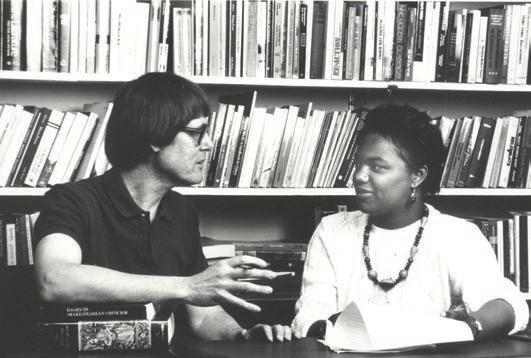
54 minute read
Al Vos says farewell
SERVICE LEADERSHIP TRADITION FAMILY Al Vos works with student PRIDE COMMUNITY ENGAGEMENT SPIRIT Michelle Berry ’88 in 1987.
The heart of Hinman
Al Vos, collegiate professor and English scholar, says goodbye to Binghamton University after a half century of service
By Eric Coker
AL VOS had never heard of Binghamton when he applied for a teaching position at the SUNY school in early 1970.
“In my imagination, Binghamton was indistinguishable from New York City,” he says. “They were both in unknown, distant New York.”
Vos, who was born and raised in rural Iowa, retired in August from Binghamton University, having mentored thousands of students for half a century as both an English professor and Hinman College (residential community) collegiate professor.
“With a grin, I sometimes say to my students: ‘If you want to know how weird I am, consider this — I’m married to my first wife (53 years), I’m living in my first house (purchased in 1974), I’m working in my first job and I’m old enough to retire. Do you know anyone else who can say this?’ Of course they don’t,” Vos says. “I go on to explain that I’m a person who puts down roots, and draws strength from those deep roots.”
Those roots in Binghamton University and the community earned Vos two Chancellor’s Awards and the Liberty Bell Award from the Broome County Bar Association. He also created Hinman’s Public Service Learning Community, chaired the University’s Faculty Senate and served in the SUNY Faculty Senate.
“Binghamton was as unknown and as foreign to me as Iowa is now to my students from New York City and Long Island!” says Vos, who received his undergraduate and graduate degrees from Calvin College in Michigan and the University of Chicago, respectively. “Yet Binghamton has become home, and I have invested my time and energy in it.”
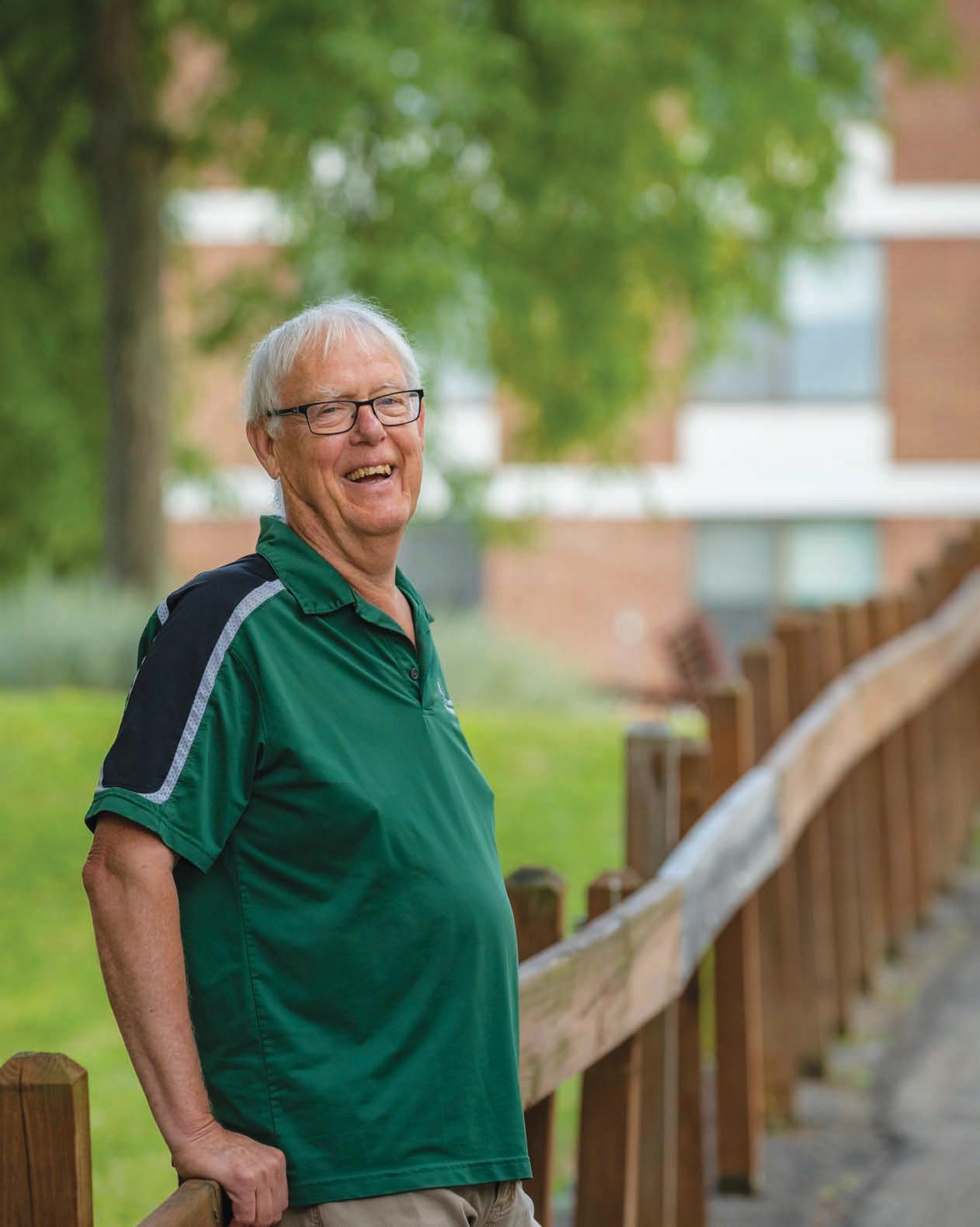
Al Vos greets Deedi Boland Brown ’14 during the 2017 Homecoming.
IN HIS OWN WORDS, HERE IS VOS’ 50-YEAR BINGHAMTON UNIVERSITY STORY:
I asked my University of Chicago professors what they knew about (what was then SUNY Binghamton). I always consider their answer prophetic: It’s an up-and-coming school.
In my early years at this University, the humanities were its strength. The division’s medievalists were its most renowned members — perhaps the most renowned of any professors on campus. They shaped not only the English Department’s curriculum, but that of Harpur College as a whole. My first course was LIT and COMP 101, which included the classics from Homer to Dante. The first choice I had to make: Would I teach The Odyssey or The Iliad?
Classes were small. I came in 1970 without any teaching experience — the University of Chicago considered us grad students to be scholars in training, and we’d learn on our own how to teach — and together my students and I, each of us energized by the cultural ferment of the 1960s, figured out what to make of these old classics.
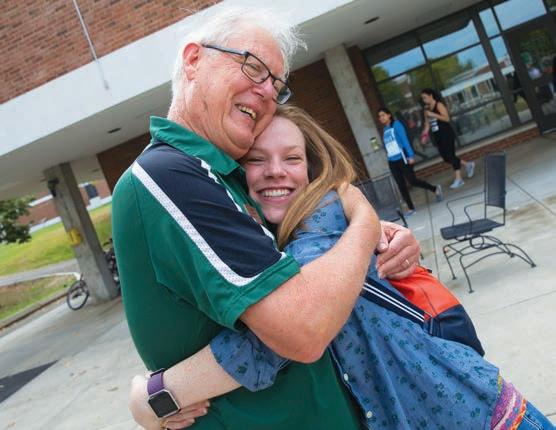
When I arrived, Harpur College still had the vibe of Glenn Bartle’s “Public Swarthmore.”
It was equally true that the University was growing rapidly, and the English Department had begun to offer a PhD only five years before I arrived. I was lucky to come near the end of a hiring spurt occasioned by our relatively new status as a University Center. Still, when I arrived, there was no engineering school; the business school was small. The English major was the biggest major in the school, and remained so for many years.
The biggest changes (over 50 years) involve not simply the increase in size, but also the increase in the range and diversity of the programs the University offers — which involves, of course, the creation of additional campuses. Harpur College, once the soul of the institution, now has to compete for its place in the sun, and the English major is a small niche in the gallery of options. The arc of my career bends toward students.
I began as a fledging, untutored professor with an office in the basement of the (Bartle) Library. Thirteen years later, my best friend and colleague said: “You should become the undergrad director in the English Department.” I went for it, and learned the joys and satisfactions of working with students outside the classroom, advising them on schedules and requirements, troubleshooting the crises in their lives and guiding them on their journeys.
I didn’t know it at the time, but the dozen years I spent as undergrad director in English prepared me to become collegiate professor in Hinman. My role in Hinman gave me the freedom to literally meet students where they live, cheering them on, offering advice, blessing them with my supportive presence. Nothing makes me happier than seeing my students grow into leaders, and to be their admiring cheerleader. Nothing makes me happier than hearing students say that they feel like they belong, and that “Hinman is home.” That almost always happens outside of class in odd and unexpected, yet extremely fulfilling, moments. Over the years I have learned that as collegiate professor I’m not just an instructor: I’m a community developer, a creator of culture, a spirit-leader.
My favorite class? The one I was teaching at the moment.
This may seem to be an artful dodge, but it contains a deep truth: I don’t teach well if I don’t have a passion for what I’m teaching. I have learned over the years that I teach not only with my head, but also with my heart. The latter counts at least as much as the former.
Having said that, I’m happiest with a rhythm

Al Vos stands in front of Hinman College, where he served as collegiate professor. that I’ve had for almost 20 years: “Literacies of Power” as a small class in the fall for first-year students living in Hinman, and Shakespeare in the spring as a large lecture for English majors and others.
I love hearing students tell how their resistance or fear changed into respect and admiration for Shakespeare’s work. Even in a large class I pour myself into the lecture, and every student has seen me choked up with emotion at one time or another. And on the final day of class, I surprise them by dressing up as Shakespeare, impersonating him as I interpret The Tempest not only as his farewell to the stage, but also as his meditation on the arduous process of learning how to live wisely and well. I get choked up one more time as I, along with Shakespeare, say goodbye: “Gentle breath of yours my sails/ Must fill, or else my project fails,/ Which was to please.” What will I miss the most? Everything!
Mostly I will miss the unique opportunities and unique joys we collegiate professors have. In our professional lives, our students are gifts to us, and that truth has grown on me over the years as I, no less than my students, discovered my talents, and found my spiritual home in Hinman. The collegiate structure, with a dedicated professor woven into the life of each residential community, is the genius of Binghamton’s undergraduate program. But, alas, too few of the faculty have any idea, and as the University gets bigger and more multifaceted, it’s harder and harder to keep that fact front and center in the minds of students and direction-setters at the University. I’m so grateful that my career at Binghamton culminated with my service as collegiate professor of Hinman.
For the love of reading
Alumni Book Club launches with The Power of Habit and Just Mercy
When the pandemic started, and people had to shelter in place, the Alumni Association needed to quickly give thought to an activity its members could enjoy together without leaving home. The answer: reading! In late spring, more than 1,200 alumni and friends were part of the Binghamton Virtual Alumni Book Club launch.
Members read a best-seller keeping at a similar pace with each other, taking about two months to complete the book. Using an online platform created by PBC Guru, club members share thoughts about the book in a discussion forum.
The initial book was The Power of Habit, a psychology, self-help book by Charles Duhigg. The second was Just Mercy by Bryan Stevenson, a true story about the Equal Justice Initiative; the book was made into a 2019 movie. It’s also a Common Read for Binghamton students living on campus this fall.
“The response to our book club has been phenomenal,” says Kim Faber, executive director of alumni engagement. “We had planned to launch in the fall, but this became a key way to engage our alumni in place of traditional, in-person events. The book club has kept us connected to our closest supporters and helped us reach alumni who were not yet involved with us.”
To join the Book Club and learn how it works, go to pbc.guru/ binghamton. — Steve Seepersaud
“Joining this book club gave me a chance to connect with other alumni. We all had interesting ideas to share and learned about each other. I also learned a whole lot on an interesting topic. I am looking forward to discussing our next read.”
Deborah Torres ’89
Distilling vast amounts of information into engrossing narratives that take us from the boardrooms of Procter & Gamble to the sidelines of the NFL to the front lines of the civil rights movement, Duhigg presents a whole new understanding of human nature and its potential.
“You might be shy at a cocktail party. Or you might be a tad nervous at a tailgate event. But if you went to Binghamton, you are smart. You definitely won’t be shy in our alumni book club. Join us, connect with other alumni and discover a new book. It’s the ultimate win-win.”
Elizabeth Napp ’87, MAT ’89
A powerful true story about the potential for mercy to redeem us, and a clarion call to fix our broken system of justice — from one of the most brilliant and influential lawyers of our time. Now a major motion picture starring Michael B. Jordan and Jamie Foxx.
“I really enjoyed the first book choice! I liked the pace because I was also reading another book on my own at the same time. I thought the emails that were sent out were nice discussion starters and also promoted deeper thought into the chapters on my own.”
Felicia Moreira ’01, MA ’02
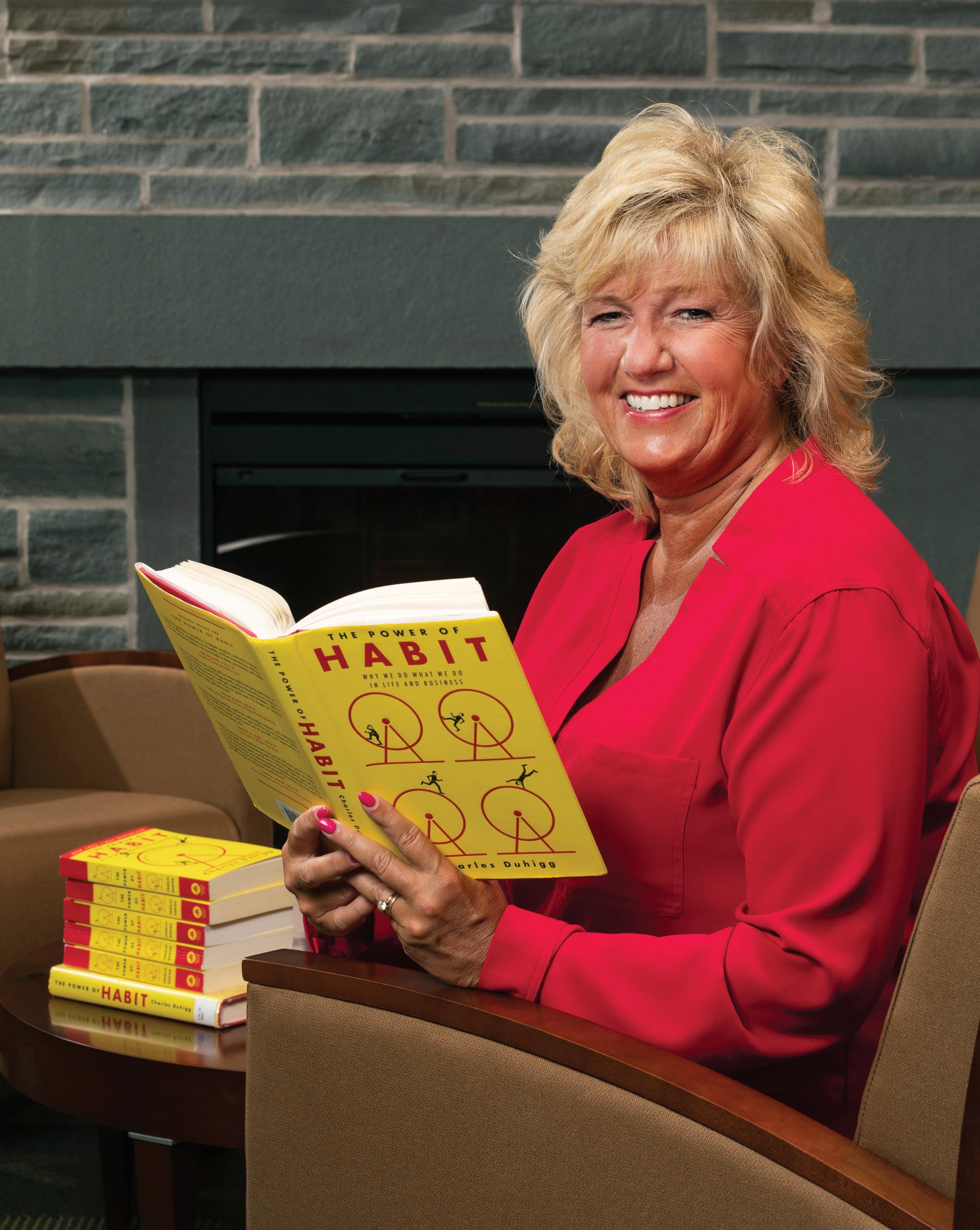
—Kim Faber
- CONNECTED
Desire to serve keeps Monica Martinez going
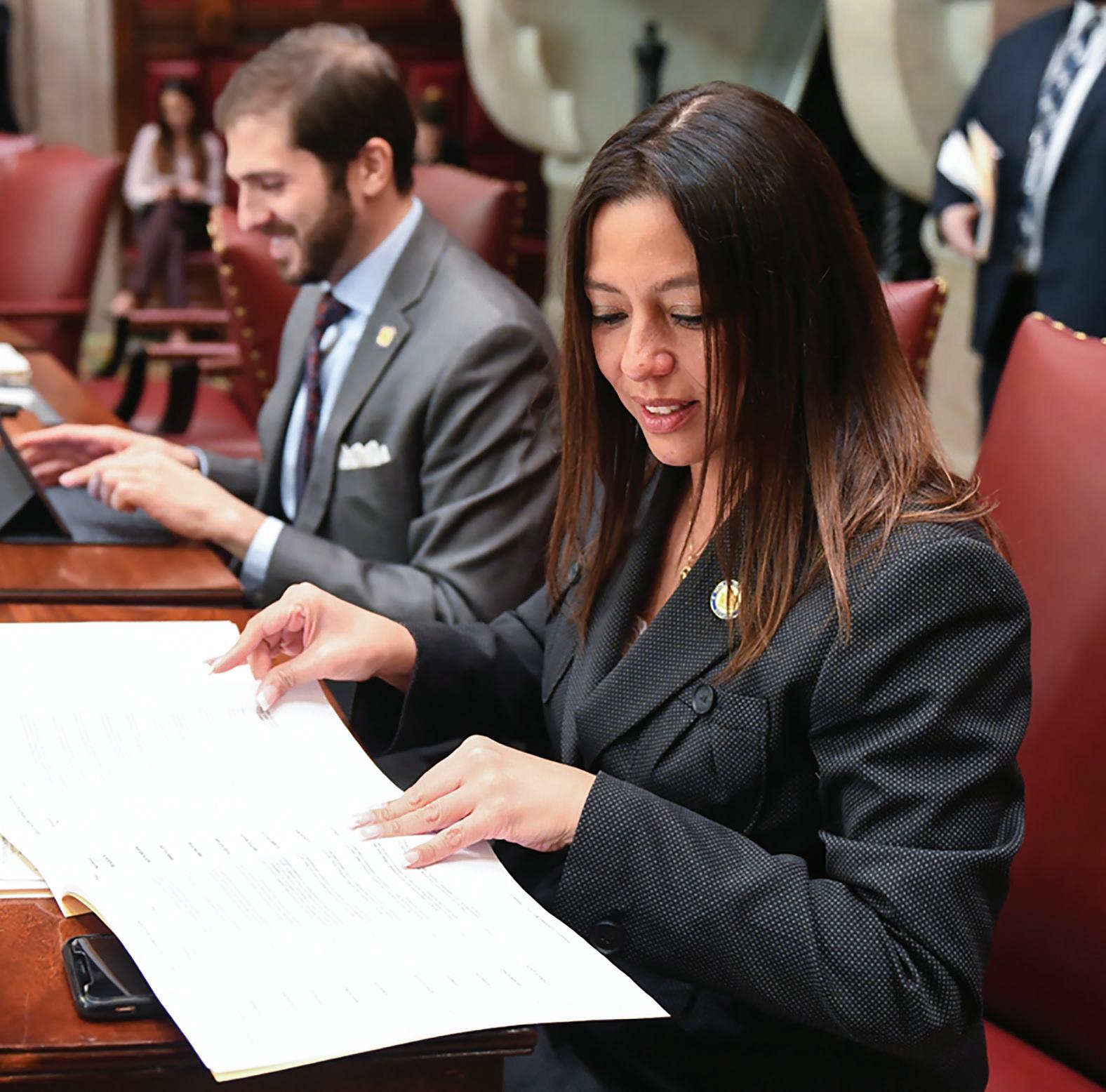
For Monica Martinez ’99, the journey to the state capitol in Albany was as straight as the blade of a saw. As she progressed in her career, she moved into positions where she could help an increasing number of people, and says her jagged path toward becoming a state senator fulfilled a destiny for herself and the people she encountered along the way.
After nearly four years of service as a county legislator, Martinez was elected to the New York State Senate in 2018, taking a vacated seat in the 3rd Senate District covering parts of the towns of Islip and Brookhaven in Suffolk County, Long Island. She never intended to go into politics and when asked if she did anything in the political realm during her time as a student at Binghamton University, the answer was, “Absolutely not!”
Her initial career was as an educator. Martinez taught at her alma mater, Brentwood High School, before earning advanced degrees and becoming an assistant principal at the Brentwood Union Free School District’s middle school. She was satisfied with being a school administrator, but her frustration with county government led her to answer the call to run for the Suffolk County Legislature.
“It took me a few weeks to decide if I wanted to run because I was leaving a profession I enjoyed very much,” Martinez says. “My decision was based on something that happened at school. I had a young girl who didn’t want to go home as she did not have heat or food at her house. I tried calling Social Services and was told I couldn’t do anything for them and that the family had to visit the department themselves. I felt hopeless as the family didn’t speak English and I felt I had failed them because of all the red tape. When asked one last time if I’d run, I said ‘yes.’ I thought I could help more people navigate the bureaucracy if I was in government.”
State Sen. Monica Martinez ’99 works in the legislative chamber.
Martinez defeated a 10-year incumbent to win a seat in the county legislature. She attributed her victory to a community feeling its concerns were unheard, especially following a string of murders that occurred in 2013. As chair of the public safety committee, Martinez established gang prevention programs and helped provide county police with additional tools to fight the growing gang problem.
During her third term, Martinez received another call: this one from Gov. Andrew M. Cuomo. He asked if she would run for the New York State Senate. She didn’t like the idea of leaving her community, so she said “no” the first two times he asked.
“How many times can you say ‘no’
to the governor?” Martinez says. “He asked me three times. I felt I wasn’t done helping the community I live in. Eventually, I was asked one last time and I took the leap when he said I could help many more individuals. I won and became the first female to serve the [3rd Senate District].”
Martinez, who is seeking a second term in November, is making an impact at the state level. The first bill she sponsored — the state’s law criminalizing the dissemination of intimate images without consent — passed and was signed in spring 2019. During the COVID-19 pandemic, she successfully advocated for the state to suspend penalties imposed when people claim unemployment insurance and the state determines they shouldn’t have. The penalty blocks those individuals from receiving future benefits to which they’re entitled.
Martinez arrived in the United States from El Salvador at the age of 3. Her mother came to America on her own, worked for several years to get established, then sent for the family to relocate on Long Island. Martinez hopes her life journey will inspire others from similar humble beginnings to pursue the American dream.
“Whenever I talk to young kids, I tell them about my background,” she says. “My mom made such a huge sacrifice. She would say that when she ate food, it had no taste, because she didn’t have her kids with her. Our grandmother took good care of us. My parents worked hard to build a life for us in the United States, and I’m so thankful. Everything I do is for my mom and my dad, and I could never disappoint them.” — Steve Seepersaud
Wedding
Baby Award
Book Published
It’s not every day that two Binghamton University alumni end up on opposite sides of a court case — one as prosecutor and the other as defense attorney. That’s what happened when Ferron A. Lien ’04, assistant district attorney of the Suffolk County District Attorney’s Office, prosecuted a felony assault case in Suffolk County Supreme Court, in Riverhead, N.Y., in February. Michael J. Brown ’89, of Michael J. Brown P.C. in Central Islip, represented the defendant and received a “not guilty” verdict. Brown is a former Suffolk County prosecutor, but never worked with Lien in the district attorney’s office. It was the first time they argued against each other at trial.
David B. Wexler ’61 received the Albert Nelson Marquis Lifetime Achievement Award by Marquis Who’s Who. In 2019, he was the recipient of the Alumni Achievement Award from the Binghamton University Alumni Association.
Richard Martin ’72 published the poetry book Ceremony of the Unknown (Spuyten Duyvil, 2020). He has produced several books of poetry, and is a past recipient of a National Endowment for the Arts Literature Fellowship for Poetry. He founded The Big Horror Poetry Series (Binghamton 1983–86).
Monica Martinez, who has been an animal lover her whole life, has four cats and three dogs.

What’s your news?
New job • New spouse • New baby • New business • New adventure

Share your news with more than 123,000 fellow alumni by visiting B-Connected, the online community exclusively for alumni, at
bconnectalumni.binghamton.edu.
Peter Lorenzi ’73, MA ’75, retired in June 2019 after 50 years in higher education, and left Maryland for Wisconsin to be near his in-laws. He travels to visit his daughters; one works in Milwaukee and the other studies at UCLA.
Donald Pollock ’75 retired from the University of La Verne in Los Angeles after 28 years of teaching film production, history and theory, and serving as head of the broadcast TV/film program for much of that time. He was awarded the distinction of professor emeritus and continues to run his production company, Adelita Productions, in Claremont, Calif. He can be reached at dpollock@laverne. edu.
Terrence Tierney ’75 produced the poetry collection The Poet’s Garage (Unsolicited Press, 2020). More at terrytierney.com.
Marc D. Abrams ’76, professor of forest ecology and physiology and Steimer Professor of Agricultural Sciences in Penn State’s College of Agricultural Sciences, received a Lifetime Achievement Award. The Consortium of Appalachian Fire Managers & Scientists announced the award at its sixth annual Fire in Eastern Oak Forests Conference in State College, Pa. Abrams was honored for his dedication to fire ecology and management, and recognized for having a great influence on scientists in the field.
Thomas Ohl ’79 received the Alfred Nelson Marquis Lifetime Achievement Award last year. He has been employed as a school counselor at Hillside Children’s Center-Finger Lakes Campus School in Auburn, N.Y., for the past 27 years.
The “Seneca 6” held its biennial gathering at the home of Stephanie Adler Greenstein in Fort Myers, Fla., in November 2019. Pictured are Heidi Laska
Butcher, Michelle Kleinman Reiff, Adler Greenstein, Annie Kniffin-Savchak, Lynn
Lesser Nutis and Ruth Katz Stromberg, all ’80.
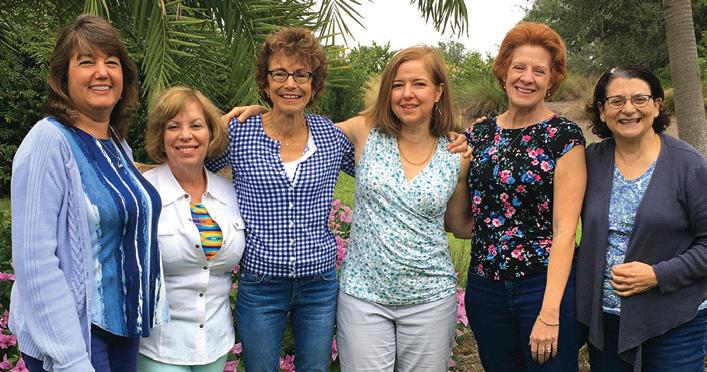
Mentor Match enables alumni to support current students
Where should I go to law school? What should I specialize in? Carisa McKillop ’20 needed help as she sorted through these big questions. She took the advice students often receive from the University’s career staff: Reach out to the alumni Headernetwork. “I gained so much support from my mentors,” says McKillop, who was a legal writing intern last summer and will attend law school next fall. “I learned about additional LSAT prep courses, what different law schools had to offer and internship opportunities. Because of my mentors, I will be more prepared for my law school journey.”
It’s not easy for students to obtain support like this because alumni are scattered around the world and busy with their careers. McKillop took advantage of Mentor Match, a platform offered by the Alumni Association and the Fleishman Center for Career and Professional Development.
Mentor Match is open to all Binghamton students and connects them to alumni mentors in a variety of fields. Communication happens online within the platform, so alumni can participate from anywhere at a time they find convenient. Phone calls or in-person meet-ups are possible if the mentee and mentor mutually agree.
Mentor Match started as a pilot for Harpur Edge, an academic and professional development program offered in Harpur College. After subsequent trial runs for the School of Management and Thomas J. Watson College of Engineering and Applied Science students, Mentor Match expanded University-wide
Carisa McKillop
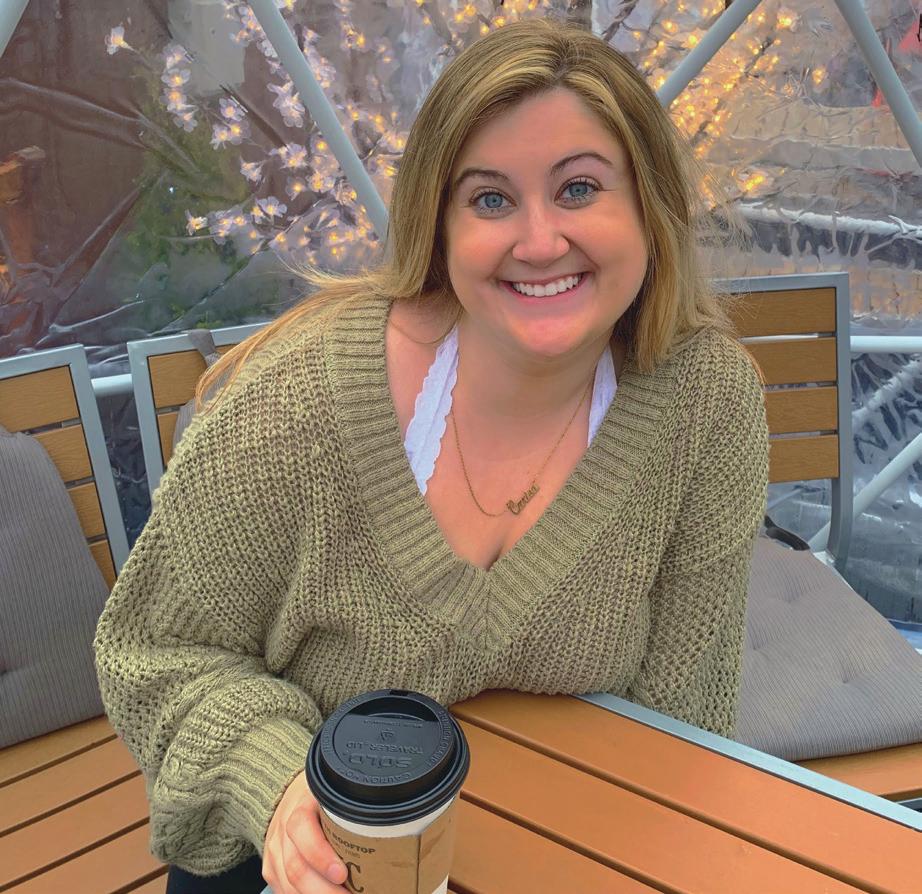
last spring, and has more than 600 students and 1,200 alumni participating.
McKillop connected with Elizabeth Robins ’12, associate counsel for the New York State Senate Majority Counsel and Program. Robins got involved with Mentor Match because she remembers what it was like going from campus — where she felt a strong sense of belonging — to an uncertain real world. She shared with McKillop that law school is a learning curve for everyone — no one should be expected to know legal writing or case law going in — and to embrace it as a time of discovery.
“I was happy to get involved because our students are trying to cope with all the uncertainty I had to deal with, but we’re in a global pandemic where nothing is normal,” Robins says. “Other alumni should take time to lend a helping hand. Current students should know that uncertainty is OK, and we all have faith they’re going to make it!” — Steve Seepersaud
Want to help a current student? Join Mentor Match at binghamton.edu/ programs/mentor-match.
Ozge Ersoy develops public art programs
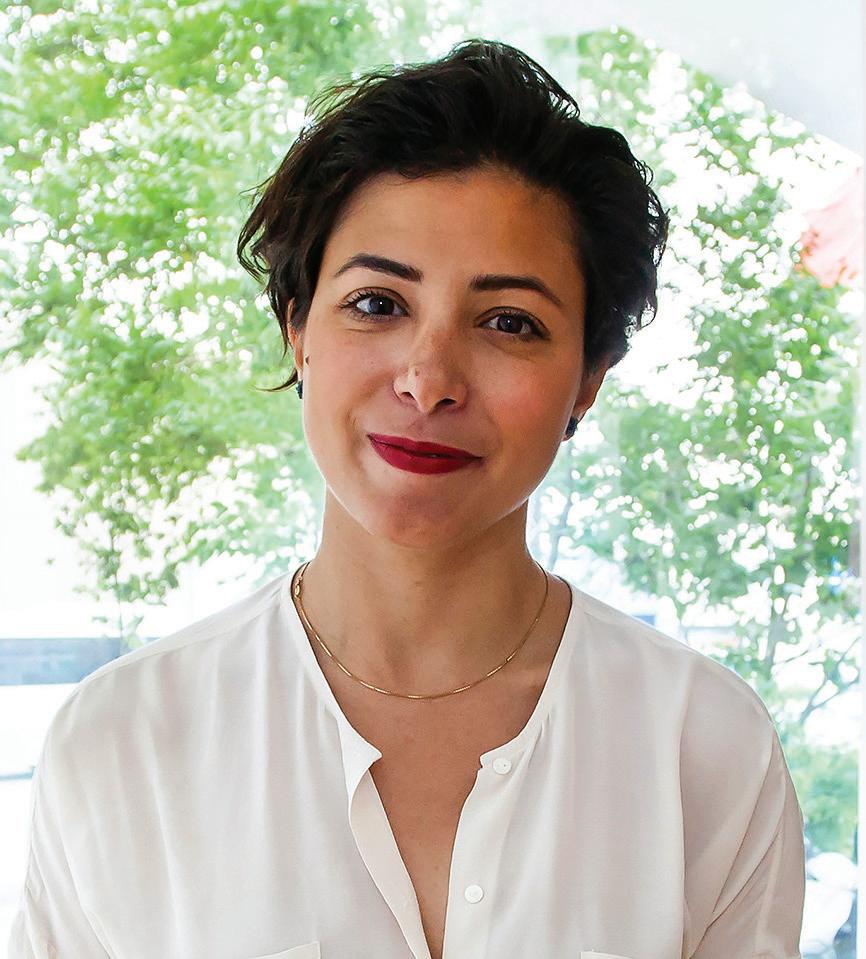
Ozge Ersoy ’07 is an example of a Binghamton University education that can cut across national and cultural boundaries. The native of Turkey came to Binghamton to study in the dual-diploma program with Boğaziçi University. The experience helped her launch a career as an international art curator.
“My dream initially was to become a diplomat or work at the Ministry of Foreign Affairs,” Ersoy says. “I came to realize there were different forms of research and discussion. I was intrigued by the difference between scholarly and artistic research, and I wanted to learn more about how artists did research, presented ideas and how exhibitions were places where art met the public.”
Ersoy is based in Hong Kong, where she’s led public programs at Asia Art Archive (AAA), a library, archive and research institution documenting the history of contemporary Asian art. Ersoy says AAA has one of the world’s most valuable collections of physical and digital materials about newer artworks in Asia. AAA is not a traditional archive in that it’s more digital than physical in nature, plus it provides interpretations on its collections.
“We make exhibitions, develop talks and workshops, and organize symposia in collaboration with artists, curators, researchers and like-minded organizations,” says Ersoy, who joined AAA in 2017. “We look for connections. I work closely with our researchers as well as artists, arts professionals, scholars and other organizations to develop programs — it’s always a collaborative endeavor.
“This work is important because we need research, scholarship and critical thinking about less visible histories in Asia and beyond,” she says. “The recent hype about contemporary art from Asia is mostly shaped by the market and the national agendas. For us, it’s crucial to have an independent institution that makes primary materials about lesser- known histories accessible and that offers a different perspective. We can help rewrite existing histories that rely on traditional Western narratives.”
Before moving to Hong Kong and joining AAA, Ersoy worked at various nonprofit organizations and foundations in New York, Istanbul and Cairo. She was curator and program manager of collectorspace, a Turkish nonprofit initiative that opened private contemporary art collections to the public and stimulated discussions through exhibitions, public programs and publications.
“Binghamton was instrumental in all of this,” Ersoy says. “I started writing about art exhibitions for the [Binghamton] Free Press, which I’m very thankful for. I was accepted to my first internships in New York thanks to these writings and I’m grateful for the editorial guidance and motivation to experiment with a writing style that was new for me. My professors motivated me to develop critical thinking and to study how arts and culture give us tools to imagine new readings of the past and to speculate for the future.” — Steve Seepersaud
Robin Barbara Salsberg ’81 was promoted to senior vice president, chief human resources officer of HealthCare Partners, MSO (HCP), based in Garden City, N.Y. Joining HCP in 2015, Salsberg leads and drives key initiatives on the HCP Executive Leadership Team. Robin and Mark Salsberg ’81 met in the Endicott Hall laundry room in 1979 and celebrated their 37th wedding anniversary in August.
Merrill Douglas, MA ’82, produced a collection of poems, Parking Meters into Mermaids, which was published as a chapbook (Finishing Line Press, 2020). Her poems are rich with transformation: daughter to mother, body to spirit, domestic to global.
Richard Solomon ’82 has interviewed numerous well-known musicians from the 1960s and 1970s on his radio show. More at thesolomonchannel.com.
Vernell Wilks ’83 is a published author of three books: Messy Mia, Leaving the Nest and Moments in Time (Lulu, 2019). More at wilkswrites.com.
Dianne Guarino ’84 retired in December 2019 after 33 years of working in college admissions, 30 of which were at Nassau Community College.
Craig Joseph ’84 is executive director, head of application and user experience in the Enterprise and Industrial Automation Research Lab in Nokia Bell Labs.
Jon Devendorf ’87, partner at the law firm Barclay Damon, was listed as a notable practitioner in the 2020 Chambers USA directory. Devendorf is part of the Litigation: General Commercial practice.
Richard R. Jones ’87 was appointed chair of the Financial Accounting Standards Board (FASB) by the Financial Accounting Foundation, the independent, privatesector, nonprofit organization responsible for the oversight, administration, financing and appointment of the FASB and Governmental Accounting Standards Board. Both boards establish and improve Generally Accepted Accounting Practices.
Michal Katz ’87 joined Mizuho Americas in 2019 as head of the banking division, where she is responsible for all investment and corporate banking activities throughout the U.S., Canada and Latin America. She was recognized by American Banker as one of the Most Powerful Women in Finance in 2019, and named as one of the Notable Women in Banking & Finance by Crain’s New York Business for the past two years.
David Bessey, MS ’88, was promoted to vice president of corporate business development at SRC, Inc. Bessey directs the corporate business development team, setting policy and growing SRC’s pipeline of business opportunities. Bessey has worked with SRC for 14 years, most recently serving as assistant vice president for Counter-UAS Business Development. He is a member of the board of directors for the Northern New York Fort Drum Chapter of the Association of the U.S. Army.
Lisa Denicourt ’89 spent 21 years in pharmaceutical manufacturing, then took a seven-year mini-retirement while moving from Virginia to West Virginia to Florida and finally to the Minneapolis area for her husband’s career in pharma. She became a founding partner of Emris International, which falls directly in line with her passion for fitness and wellness. The company operates in the U.S. and South Africa and is part of the booming hemp/CBD industry.
Christine Hamm, MA ’89, was awarded the Tenth Gate Prize by Word Works Publishing for her manuscript Gorilla. The Tenth Gate Prize is given annually to mid-career poets who write in English and have previously published at least two poetry collections.
Margot Lebenberg Carter ’89 made the list of 2019 Most Influential Corporate Directors compiled by WomenInc., a leading magazine dedicated to comprehensive coverage of women’s achievement in business. Carter is president of Living Mountain Capital and serves on the boards for Eagle Materials Inc. and Installed Building Products, Inc.
Jessica Presedo helps feed the hungry in NYC
Volunteering at a Johnson City soup kitchen set Jessica Presedo ’12 on a path that’s unusual for a math and Spanish major.
“One of the dining service workers from my residence hall was there to receive food,” Presedo says. “It reinforced that you never know who is struggling to afford food. Many people are working full time but need help. That made me want to be in the nonprofit sector helping people from all walks of life.”
Presedo is the associate director of corporate service and engagement for the Food Bank for New York City, building and maintaining relationships with more than 300 businesses citywide. Presedo assists with on-site volunteer programs as well as pop-up food banks set up at various company offices where employees are able to take an hour off to pack pantry boxes. The on-site volunteer program went on hiatus during the COVID-19 pandemic.
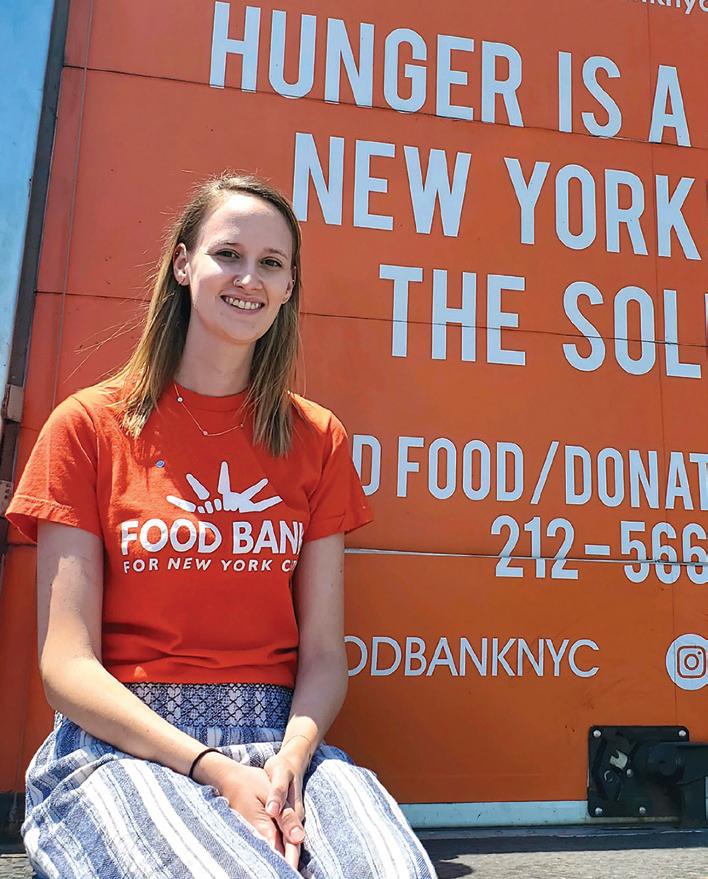
Jessica Presedo ’12 sits on the back of a Food Bank for New York City truck. volunteering, we shifted to more remote means of support,” Presedo says. “We encouraged fundraising drives and have a ‘Dear New York’ letter-writing campaign where volunteers can work individually or get together on a video call and write letters of hope and cheer for community members receiving pantry bags.”
The mass business shutdown and resulting job losses from the pandemic translated into a drastically increased need for food. For example, at a popup distribution center at the Barclays Center in Brooklyn, 41,700 pounds of food was distributed to nearly 1,000 households, feeding more than 5,500 people. Presedo’s organization not only saw more people coming in; it saw more first-timers.
Presedo enjoys being on site when food is distributed because she’s able to see clients’ reactions. Toward the end of the year, people are thankful to receive a turkey voucher because they “can have a holiday like everyone else.”
At the Barclays distribution site, Presedo had the unenviable task of telling people at the back of a long food line that there might not be anything when they reach the front.
“Out of 100 people in that line, maybe two gave up and left,” Presedo says. “Almost everyone stayed. The hope that they could get something was worth waiting for an hour. It hammered home that the need in New York City is so real, and our efforts go a long way. The relief you see on people’s faces when they walk away with food makes everything worth it.” — Steve Seepersaud
Emin Israfil offers smarter cleanup solution
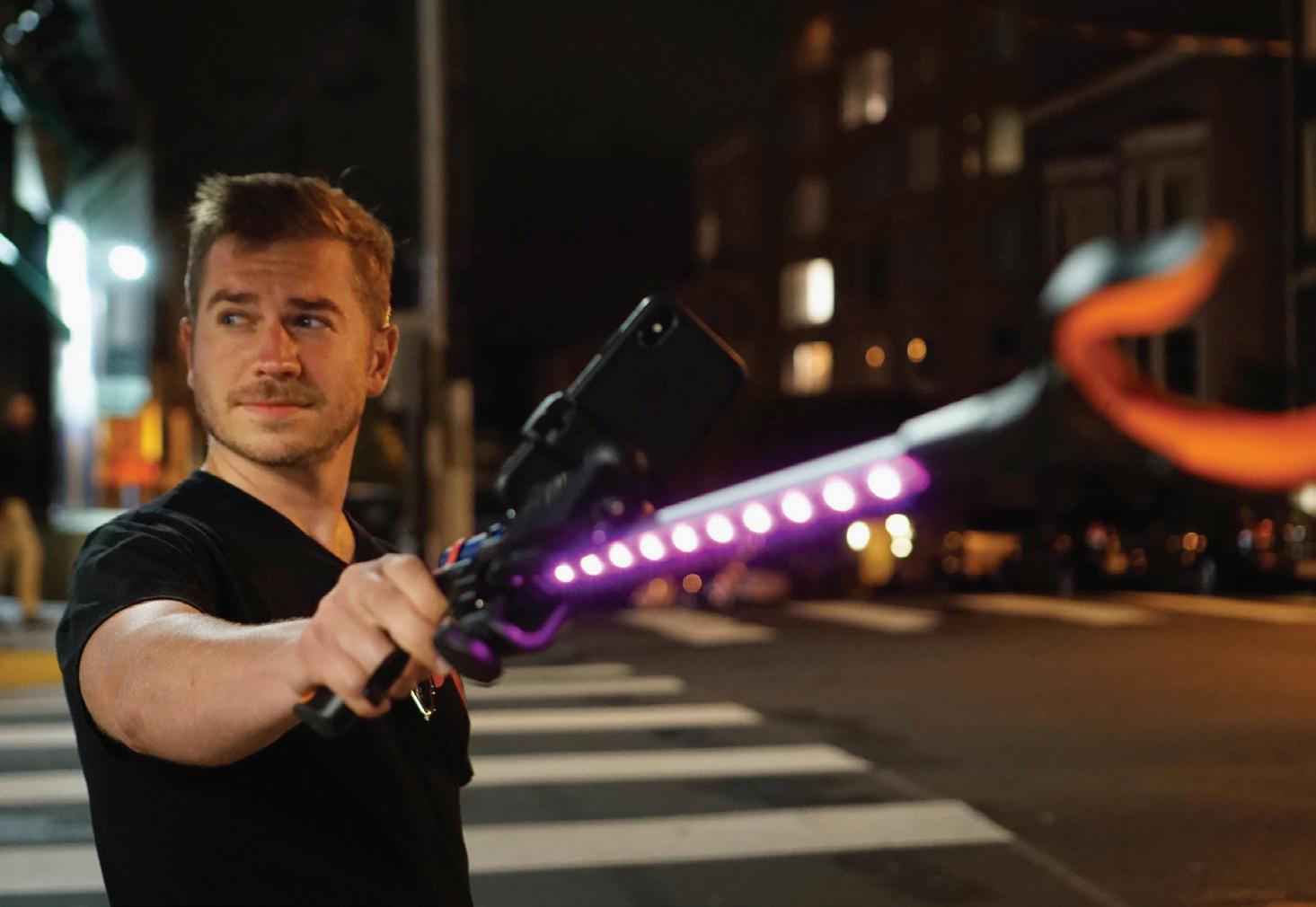
Emin Israfil ’09 says the idea behind running apps and the ways we engage virtually can create cleaner communities.
With longtime friend Elena Guberman, Israfil launched the app Rubbish. The San Francisco-based venture uses technology to understand litter trends.
The Rubbish beam — a hand-held litter-grabbing claw — is a key part of the equation. Download the Rubbish app, put your smartphone on the beam, sync via Bluetooth and you’re ready to go. Each time a piece of litter is picked up, a picture is taken in the app. Data is analyzed to highlight areas of a city that need attention.
For example, Rubbish installed a cigarette disposal bin in a part of San Francisco that, according to the company’s data, had a tremendous amount of cigarette butts. The result: a 50% reduction in cigarette butts on the ground.
“One of the most valuable things about Rubbish is that our data helps local leaders develop smarter public policy,” Israfil says. “We go to the city and say: ‘A particular street is dirty after three cleanups, so let’s do something about it.’ We’ve also integrated the app with 311 [non-emergency municipal services], so if you see something that’s too big or dangerous to deal with, submit it through the app and the city takes care of it.”
Israfil pursued a pre-med track at Binghamton — majoring in molecular biology and genetics — but decided against going to medical school. His creation turned out to be helpful during a global health crisis.
Rubbish doesn’t need a pandemic or huge cleaning teams to show its value, Israfil says. An individual using the app can make a difference by being consistent and persistent.
“We encourage people to start [cleaning up] where they live,” Israfil says. “If you start local, you see and experience the difference. You see it in the data and experience it with your eyes. [Over time], you’ll notice you’re picking up significantly less. It doesn’t take long to impact your neighborhood.” — Steve Seepersaud
David S. Feather ’90 was selected to the 2019 New York Metro Super Lawyers List, an honor given to only 5% of attorneys. Feather Law Firm, P.C. is a boutique law firm based in Garden City, N.Y., and focuses exclusively in the areas of employment and labor law, as well as commercial litigation.
James Tofte ’91 is site civil engineer for Cornell University in Facilities and Campus Services, where he is charged with the design, maintenance and vision of the Ithaca campus hardscapes. He is married, has three sons, had a 20-year career as a professional and college hockey referee, and has been active in a number of community organizations in the Binghamton area, including board president of the Newman House at Binghamton University.
Leah Burdick ’94 is chief growth officer at PRIDE Industries, an organization that creates jobs for people with disabilities and empowers them for long-term success.
Kerry Ann McDonald-Cady ’94 was appointed by Vermont Gov. Phil Scott as a Superior Court Judge assigned to the state’s trial court consisting of the civil, criminal, family and environmental divisions.
Homer B. Ramsey ’94 was elected to the board of directors of the international law firm of Herzfeld & Rubin, P.C., where he concentrates his practice on complex civil litigation including class actions, multi-district litigation and multifaceted individual litigation matters.
Rosemarie Castellano ’95 played violin in the University Orchestra and has continued playing as a hobby. Because New Rochelle, N.Y., was hard hit by COVID-19, she has been playing the violin from her balcony in the evening to the delight of her neighbors and frontline workers. More at facebook.com/ balconyballads.
Esther Dittler ’95 returned to the Office of General Counsel of the National Indian Gaming Commission. She re-joined the organization after working as general counsel for the Seneca Nation’s Tribal Gaming Commission.
Jason Rohr ’96, MAT ’97, PhD ’02, is the Ludmilla F., Stephen J. and Robert T. Galla College Professor of Biological Sciences at the University of Notre Dame. He submitted one of the highestscoring proposals in the John D. and Catherine T. MacArthur Foundation’s 100 & Change competition for a single $100 million grant to help solve one of the world’s most critical social challenges. Rohr’s proposal, “Disease, Food, Energy, and Water Solutions: Defusing a Global Crisis,” offers a sustainable, local solution to reduce schistosomiasis while at the same time addressing food, energy and water shortages afflicting marginalized populations.
Jason Charkow ’98 joined the law firm Goldberg Segalla. He is a legal strategist and patent litigator with 16 years of experience overseeing international patent prosecution, post-grant proceedings, monetization, licensing, portfolio mining and diligence for Am Law 50 firms and publicly traded companies.
Elizabeth J. (Rodriguez) Sandonato
’98 was promoted to partner at Martin Clearwater and Bell, LLP, where she specializes in medical malpractice and nursing home defense litigation. Sandonato received her juris doctor degree from St. John’s University School of Law in 2001. She resides in Westbury, N.Y., with her husband, Steven, and their two children.
Jared Siegel ’98 joined Barings, an international investment management firm with more than $338 billion in assets under management, as director of social media content. He was previously director of digital content at The Madison Square Garden Company.
Seth Liebenstein ’99 joined Blank Rome LLP, where he practices in the firm’s New York office as Of Counsel in the real estate group. He focuses his practice on transactional real estate law, including acquisitions, dispositions, financing, commercial leasing, and cooperative and condominium representation, both locally and across the United States.
Jeffrey Sanders, MAT ’99, earned a master’s degree in education from the University of Maine. He lives in Orono, Maine, with his two children.
Warren Sager’s company offers alternative to cash payments
Businesses that are able to survive the COVID-19 pandemic will need a new and more nimble way to operate going forward. Warren Sager ’91 and his partners at Moxey believe their national network of barter communities is the solution.
A forward-thinking entrepreneur, Sager connected with a local barter community in Baton Rouge, La., nearly 20 years ago. Not only did he see benefit to participating in the network, he saw its growth potential and became an investor.
Today, Moxey is active in 15 Southeastern communities with more than 4,000 members. As of last year, Moxey had processed more than $100 million in transactional volume, making money through commissions.
Moxey does two main things for local businesses: helps get new, high-value, recurring customers and improves their valuable cash flow.
Here’s how it works: When Business A joins the Moxey network, it instantly receives an interest-free credit line.
“Day-one buying power has always been a selling point in our communities, but it has never been more valuable than it is now,” Sager says.
If Business A, in its first Moxey transaction, purchases $500 of goods and services from another member of the network, the account balance becomes –$500, with the expectation that Business A will make future sales to cross the break-even point and hopefully be on the plus side. The network’s managers and brokers leap into action, designing ads and promoting Business A to others in the network. This helps generate sales
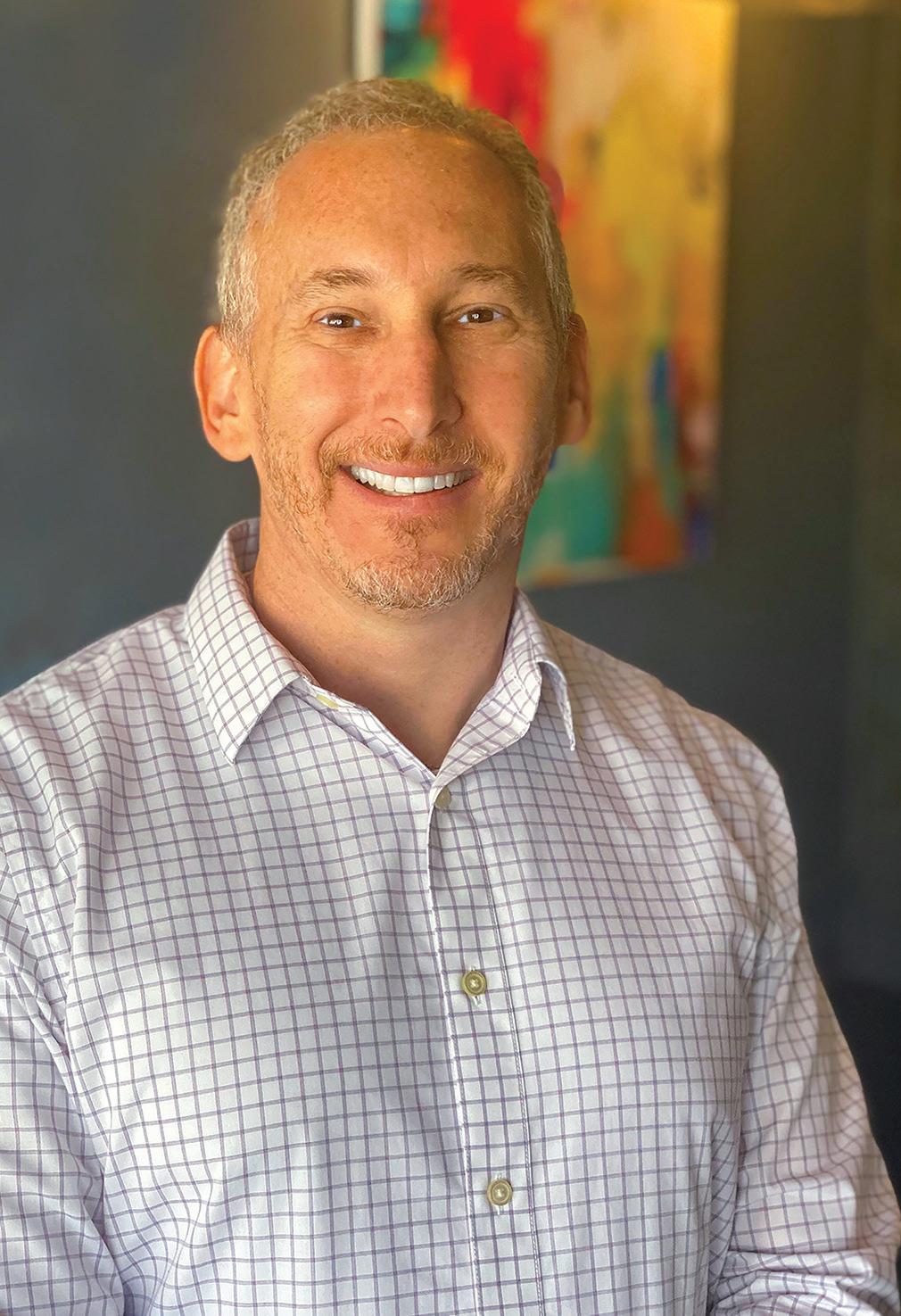
that move Business A’s Moxey account balance into the black.
“Moxey is responsive to the needs of the small-business community,” Sager says. “You can use it on anything: printers, restaurants, mechanics, graphic designers, painters, you name it. What’s awesome is that once businesses join Moxey, they love it and they always try to spend their Moxey dollars over cash.”
Businesses can also use Moxey to work together and give each other supplies and services they need to ensure survival when cash is tight.
“There was certainly a time when business owners were leery of signing up to trade away their products,” Sager says. “The concept was foreign and the learning curve was long. That time has certainly passed. Business owners today must be adventurous and agile.” — Steve Seepersaud
Christopher Knight wins Pulitzer for art commentaries

It wasn’t necessarily the $750 million price tag that made Christopher Knight, MA ’76, shake his head at the renovation of the Los Angeles County Museum of Art. He felt the project’s proponents were focused on the new design at the expense of the artworks the building was intended to house.
As art critic for the Los Angeles Times, Knight used his column inches to make that point, creating a series of commentaries that helped him win the 2020 Pulitzer Prize for Criticism.
“The project had been underway for more than a decade, and almost all the attention was focused on the [building’s] aesthetics,” Knight says. “What had emerged, however, was that the plan would also radically alter the art museum’s established program. That feature of the project, which I think is most important, had received almost no public scrutiny. I was thrilled the Pulitzer citation says my columns demonstrated ‘extraordinary community service by a critic.’”
The museum, which opened in 1965, is encyclopedic, collecting art from all global cultures, ancient to modern. Knight says the virtue of such a design is that it joins the cultures in one place, reflecting the urban environment in which the museum is situated.
The campus is being demolished and the new building, Knight says, won’t allow the museum to grow as its collection expands. Going forward, the main collection would be the basis for constantly changing exhibitions. Satellite locations would open around the city, breaking the collection up. Through his columns, Knight wanted to change the conversation about the project and have the public see all the potential impacts.
“I knew that changing the conversation would not be easy, because a museum program is an abstract idea while the aesthetics of the building are shown in renderings that draw attention,” he says. “I had written three or four things over a number of years before this group of pieces, and demolition day for the project was fast approaching. But the controversial building design kept getting all the attention. So I realized it would be necessary to ‘flood the zone’ if the conversation was going to be changed. I decided to watch events closely and write off of the unfolding news.”
Knight had been nominated for a Pulitzer three other times, and this was the first time he won. The award recognizes Knight for his work on the museum commentaries as well as several exhibition reviews. Art critics rarely win a Pulitzer, and it’s even rarer for someone outside the Northeast to win the criticism category.
“We all know the old jokes about Los Angeles,” Knight says. “Tinseltown, where culture only exists in yogurt. So it’s a bonus to have that old-fashioned cliché challenged. In the 1980s, I was recruited by The New York Times and Newsweek in Manhattan, but I’m glad I stayed here in Los Angeles. Growing with the art world here, which is now a global powerhouse, has been a blast.” — Steve Seepersaud
Patricia Donahue ’01 is director of financial aid operations at Binghamton University. In 2018, she received the New York State Financial Aid Administrators Association’s Robin Jaycox Service Award for outstanding regional service.
David A. Landman ’01 is a partner at the law firm Ulmer & Berne LLP, working in the business litigation practice group. He focuses on complex commercial litigation, dividing his time between Ulmer’s New York and Cleveland offices.
Victor Matthews ’01 has joined the law firm of Hinshaw & Culbertson LLP as partner. He represents mortgage lenders, servicers and other financial services companies in a wide array of litigation matters, including consumer financial services, real estate and general commercial litigation. He received his juris doctor degree from Wake Forest University School of Law.
Desiree H. Melton, MA ’02, PhD ’06,
is an associate chair of the liberal arts department at Savannah College of Art and Design, where she oversees 20 faculty members and is a professor of philosophy.
Erica Pagnozzi Zippo ’03 is president of the New York Tri-State Chapter of the American Nursing Informatics Association (ANIA). After receiving her master’s degree in nursing/healthcare informatics, she worked with colleagues to form a local chapter of ANIA. She has served on the founding board as president for the last two years.
Bill Stubbs ’04 received the 2020 Long Island Business News 40-Under-40 Most Promising Business People Award.
Rory S. Clark ’05 was named to the 2020 REALTRENDS America’s Best Agent List, and was the No. 1 agent in the Halstead Village Office and the No. 4 agent companywide based on individual agent sales volume in his role as a residential real estate agent in New York City. He lectured at a virtual CLE hosted by the National Law Institute on the topic of “Sales Boot Camp for Attorneys.” Clark and his wife, Devon, welcomed a son, Harrison Dean, on July 2, 2020. He joins big sister Noa and aspires to be a Bearcat one day.
Peter M. Eraca ’05, MA ’07, is director of admissions for the School of Law at the University of California, Irvine.
Gaitree Singh ’05 married Kenroy Ricknauth at the Hindu Temple Society of North America community center in Queens, on Aug. 17, 2018. Carlene Miller and Jennifer Frazier, both ’05, were bridesmaids; Victoria Liou ’05 attended.
Brandon M. Draper ’06, with the Harris County Attorney’s Office, has been elected to membership in the Fellows of the Texas Bar Foundation. Fellows are selected for their outstanding professional achievements and demonstrated commitment to the improvement of the justice system throughout the state.
Eldridge McNair, MA ’06, welcomed a daughter, Evelyn Jo, on April 29, 2020. Mom, dad and baby girl are all settled in at home.
Jordan Peck ’06 is vice president of Physician Practice Operations at Southern Maine Health Care. He was previously senior director of the MaineHealth Center for Performance Improvement.
John R. Rahn ’06 published The UNBEATABLE Mindset, a tool for goal setting, motivation and routine building.
Brent Gotsch ’07, MPA ’10, was elected town justice for the Town of Neversink in Sullivan County, N.Y. He was also elected to serve on the board of the New York State Floodplain and Stormwater Managers Association.
Erica Opitz ’07 is a shareholder at the Atlanta law firm Chamberlain Hrdlicka and was included among Super Lawyers for 2020. She was named as a Georgia Rising Star. Opitz assists clients with corporate governance, commercial contract, mergers and acquisitions, and privately-held securities matters. She earned her law degree from Mercer University’s Walter F. George School of Law.
Keith LaScalea takes unique journey throughout America
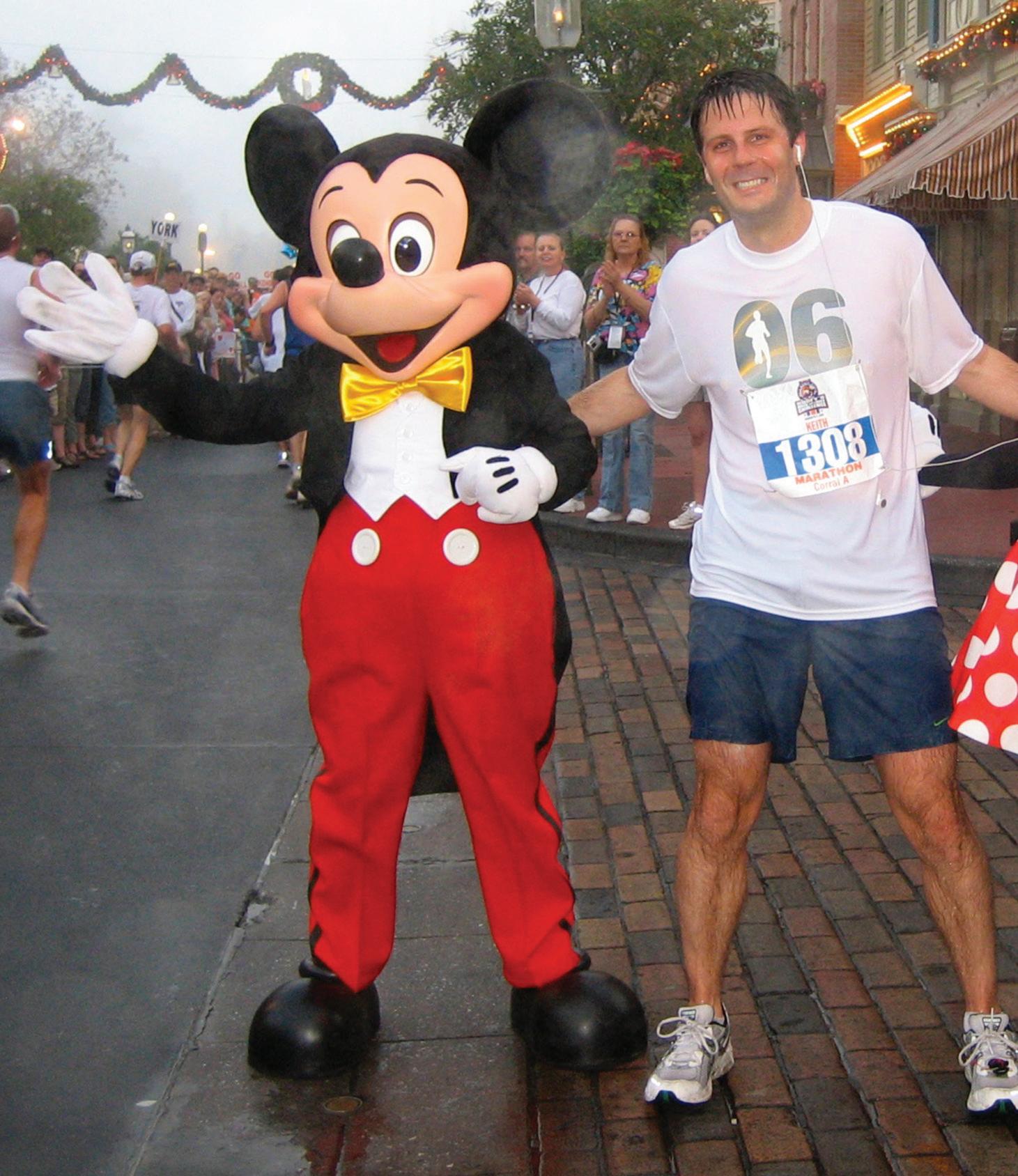
Riding in a pink limousine to Graceland. Visiting an elephant sanctuary outside Little Rock, Ark. Seeing a man in a tutu with a magic wand offering free wishes for faster running times in Vegas.
Keith LaScalea ’94 had these experiences — and many more — on his journey throughout America that few are able or willing to take. In January, he completed the Maui Oceanfront Marathon in Hawaii, which made him part of an elite club of runners who have successfully completed marathons in all 50 states plus Washington, D.C.
“[Hawaii] was an amazing experience as 40 of my family and friends came to support me in this milestone moment,” LaScalea says. Among the crowd were longtime Binghamton friends Mitchell Katz and Kate Solomon, both ’95. “In retrospect, I am very happy all of us were able to celebrate together in this stunning location before the pandemic began.”
As a student at Binghamton, LaScalea would occasionally run on campus or in the Nature Preserve. But he didn’t pick up long-distance running until years later. A physician for Weill Cornell
Medicine in New York City, he lives in Manhattan along the city’s iconic marathon route and that’s where he ran his first marathon, in 2003. He subsequently ran the Marine Corps Marathon in Washington, D.C., and the Chicago Marathon. And each time he completed a race, he got the bug to sign up for another one.
“I saw a guy wearing a shirt that said ‘50+D.C.’ and I asked what it meant,” LaScalea says. “It was a challenge to do a marathon in every state. Somewhere


around 2007, I thought this would be a good goal to have. I hadn’t traveled much growing up, and I thought it would be a great way to see the country.”
Along the way, LaScalea went through a stretch where he ran a marathon every month. Why? He says each marathon was a training run for the next. Some races were memorable for good reasons; others just reminded him that running 26.2 miles is always tough.
He thought a Wisconsin marathon would be fairly easy, offering miles of flat Midwestern terrain. Instead it delivered brutal hills, earning the name “extreme marathon.” He was bitten in the face by a yellow jacket during the Akron Marathon in Ohio. At the 2006 Chicago Marathon, he surprised himself by running his personal best time of 3:12:53 — fast enough to qualify for the Boston Marathon.
“The conditions were perfect,” LaScalea says. “Cool, with a light drizzle, and I was well-trained. Getting into Boston wasn’t really a goal for me. I don’t pay too much attention to the clock because the marathon always has a way of disappointing you. But that was a very good day!” LaScalea’s story is included in Tales from the Trails: Runners’ Stories that Inspire and Transform (Glitterati Editions, 2019). With a 50+D.C. shirt of his own now, where does he go from here? He plans to hit the world’s major marathons, including London and Tokyo, once it’s safe enough to travel again.
“As a physician, you can be working all the time, unless you specifically choose to stay fit,” LaScalea says. “Early on, I had decided that I wanted to stay active. [The 50+D.C.] challenge was a great way to have something continuously on my calendar to keep me motivated.” — Steve Seepersaud
David Belsky ’08 founded the public relations agency Good Rebellion. It is focused on purpose-driven clients, including nonprofit, philanthropy, education, healthcare, politics, government and corporate social responsibility. More at goodrebellion.com. Before Good Rebellion, Belsky served in senior leadership positions for nearly a decade at SUNY System Administration, and was a senior communications officer at the NYC Department of Education and managing director at a branding agency in Manhattan.
Yohansa Fernandez ’08 married Edwin Torres ’10, MS ’14, on Nov. 20, 2019, in New York City. After nearly nine years of courting and a quiet initial proposal, Torres re-proposed to Fernandez during a question-and-answer session following her presentation at a national public health conference in Philadelphia. Both are EOP alumni and Alumni Association Medal of Distinguished Service recipients.
Craig M. Goldwasser ’08 is a partner at Pillinger Miller Tarallo, LLP. He has about 10 years of experience handling a wide variety of complex and high-exposure general liability, dram shop liability, pharmaceutical malpractice, medical malpractice and automobile liability matters from inception through trial in the New York tri-state area. Since 2015, he has annually been named by Super Lawyers as a New York “rising star.”
Holly M. Wendt, PhD ’09, was awarded tenure and promoted to associate professor of English at Lebanon Valley College. Wendt is director of creative writing and has fiction forthcoming from Shenandoah literary magazine.
Kyle Seeley ’11 married Colleen Callahan ’12, MBA ’14, on Nov. 30, 2019. There were too many Binghamton alumni (and one faculty member!) in attendance to count.
Nicole Khalouian ’15 was promoted to associate at Morrison Mahoney LLP. Her law practice is focused on products, tort and general liability litigation, life science, insurance coverage litigation and arbitrations.
Thomas R. LeRoy ’18 was promoted to Engineer II at Barton & Loguidice (B&L), a Northeast regional engineering, planning, environmental and landscape architecture firm. LeRoy is a member of B&L’s facilities practice area.
IN MEMORIAM
Evelyn (Heiyen) Buckalew ’57, of State College, Pa., died Nov. 17, 2019, at the age of 84. She is survived by her husband of 61 years, Ronald; her daughter, Dana; her son, Stephen; and four granddaughters. Buckalew worked for many years at Penn State University as an instructor and a publications editor. She will be remembered for her generous spirit, as well as her grace in coping with Parkinson’s disease.
James S. Friend ’64, died Jan. 7, 2020, at the age of 76, following a long illness. He is survived by his wife of 54 years, Joan; his sons, Adam and Kevin; and his grandsons, Zachary, Jared and Alex.
Douglas Grady ’72 died May 9, 2020.
Richard Levin ’72 died Feb. 4, 2020, at the age of 70, following a valiant battle with leukemia. His influence on everyone he came in contact with is impossible to overestimate. During his 30 years of teaching at Guilford (Conn.) High School, his tireless efforts on behalf of his students resulted in countless success stories.
Scott Gollop ’78 of Delmar, N.Y., died April 7, 2019, of an aortic dissection. He was the beloved husband of Sandra Golde Gollop ’79, and father of Emily Gollop Comack ’09 and Benjamin Gollop.
Benjamin Dragon ’79 died Feb. 27, 2020, at the age of 62. He fought and beat aggressive lymphoma into two remissions with the courage and humor with which he lived his life. His final weeks were spent at home surrounded by his loving family. He is survived by his wife of 32 years, Diane, his daughter Laura, son Tom, and numerous relatives and good friends.
NEW RELEASES
BOOKS
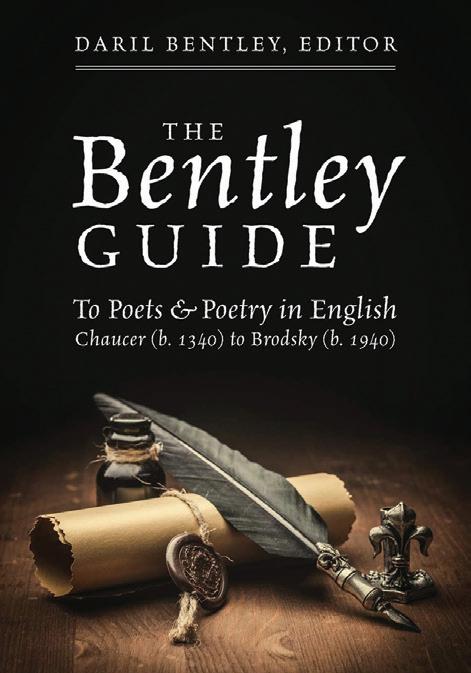
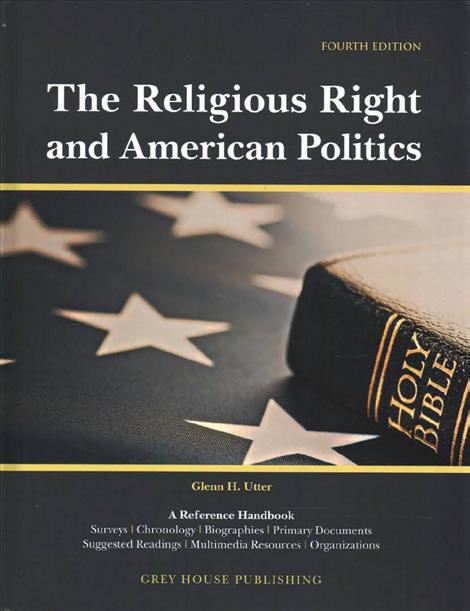
The Religious Right and American Politics (4th edition) Glenn H. Utter ’67 Grey House Publishing, 2019
This edition updates and expands its examination of the religious right and its influence on American government, citizens, society and politics. The religious right is continuing to make its voice heard in the public sphere through efforts to outlaw the teaching of Darwin’s theory of evolution and advocacy for the outlawing of abortion. Utter’s latest book includes chapters on the religious right and science, electoral politics and voting, cultural issues, economic issues, and American international policy. Utter is distinguished professor emeritus in the Department of Political Science at Lamar University in Beaumont, Texas.
From Enlightenment to Rebellion: Essays in Honor of Christopher Fox James G. Buickerood ’81 (editor) Bucknell University Press, 2018
This collection of essays has been gathered to celebrate the scholarly and administrative career of Christopher B. Fox, MA ’74, PhD ’78, co-founder of the Keough-Naughton Institute for Irish Studies and professor of English at the University of Notre Dame. It includes discussions of Fox’s role in contemporary global Irish studies, and new research on many points of Irish culture in medieval, early modern and modern history, literature, folklore and philosophy. Supplementing more than a dozen scholarly contributions are a short story by contemporary Irish novelist Patrick McCabe, and an account of the award-winning documentary series, 1916: The Irish Rebellion, of which Fox was executive producer.
The Bentley Guide to Poets & Poetry in English: Chaucer to Brodsky Daril Bentley ’81 Outskirts Press, 2019
Bentley, an established poet and poetry scholar, presents a book that was 40 years in the making. His reference is intended for all poetry lovers. Though the book does not contain poetry, it recommends poets and poetry by way of several criteria. Readers will find biographies of hundreds of poets from Chaucer (b. 1340) to Brodsky (b. 1940). Bentley also provides lists of “Best Poets,” “Best Poems by Individual Poet” and “Best Poems Historically.” He made selections based on what regular people would be most likely to enjoy, not on what academics would treasure. Bentley studied with the late Milton Kessler, poet, professor and founder of Binghamton’s creative writing program.
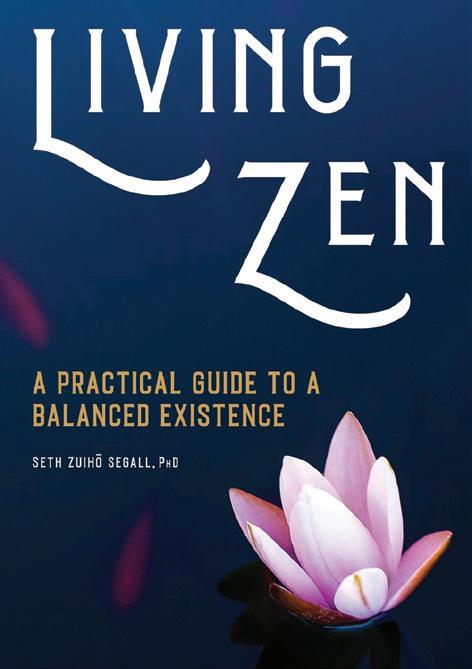
Living Zen: A Practical Guide to a Balanced Existence Seth Segall ’69 Rockridge Press, 2020
The Zen priest and retired clinical psychologist offers a book for people who may be interested in Zen but know very little about it. Segall helps readers bring the practice of Zen into their lives with scenarios inspired by real people using Zen strategies to overcome challenges.
Segall also released Buddhism and Human Flourishing: A Modern Western Perspective (Palgrave MacMillan, 2020), a philosophical investigation of how ideas regarding well-being derived from the Aristotelian tradition are impacting the way modern Western Buddhists engage in and understand Buddhist practice.
Segall has been a practicing Buddhist for 25 years. His blog, The Existential Buddhist, provides insights on Buddhist philosophy, practice, ethics, history, art and social engagement.

Nimble Tongues: Studies in Literary Translingualism Steven Kellman ’67 Purdue University Press, 2020
Kellman, a professor of comparative literature at the University of Texas at San Antonio, provides a collection of essays that continues his work in translingualism, focusing on the phenomenon of switching languages. Nimble Tongues is a series of investigations and reflections rather than a single thesis. The topics that Kellman covers in his newest book include the significance of translingualism; translation and its challenges; immigrant memoirs; the autobiographies that Ariel Dorfman wrote in English and Spanish, respectively; Francesca Marciano, an Italian who writes in English; Jhumpa Lahiri, who has abandoned English for Italian; Ilan Stavans, a prominent translingual author and scholar; Hugo Hamilton, a writer who grew up torn among Irish, German and English; Antonio Ruiz-Camacho, a Mexican who writes in English; and the Universal Declaration of Human Rights as a multilingual text.

In the World Enormous Tomer Inbar ’88 Barrytown/Station Hill Press, Inc., 2018
The poems in Inbar’s book are a form of thinking out loud about the preciousness of life and the cycles of passing and starting again. Inbar’s work focuses on a period starting just before his mother died, and ending soon after the birth of his twin daughters. The poems are engaged in transition, conversation and everything that falls in between.
“These poems like their movement,” Inbar says. “I like how these poems move. Apart from the definitional, I find comfort in being present as things move. With sibilance. On their own volition. Taking the qualities of their construction along.”
Inbar was born in Jerusalem and raised in Brooklyn. He founded and edited Camellia, an experimental literary journal from 1989 to 1997, and has published translations of Saibara, a genre of Japanese folk song. He’s an attorney at Patterson Belknap Webb & Tyler, representing nonprofit organizations.

The President and the Supreme Court Paul Collins, MA ’03, PhD ’05, with Matthew Eshbaugh-Soha Cambridge University Press, 2019
In this book, Collins and Eshbaugh-Soha argue that presidents discuss the Supreme Court’s decisions to demonstrate responsiveness to important issues in public policy and to steer how the decisions are implemented. Presidents view the court’s rulings as occasions to promote their policy goals, campaign for re-election, shape their historical legacies and try to affect the impact of court decisions on government bureaucracy, the media and the American people.
Collins is professor of legal studies and political science at the University of Massachusetts, Amherst. His research and commentary have appeared in a host of popular media outlets, including CNN, The New York Times, National Public Radio, Time, USA Today, The Wall Street Journal and The Washington Post.
Bari Lewis ’83 died May 18, 2020. She was a Social Security, disability and workers’ compensation lawyer on Long Island for 34 years. She is survived by her husband, Martin Danowitz, and her two daughters, Melinda Danowitz and Carly Gruber ’17.
Margaret Mary Stackhouse ’83, MS ’97,
of Chenango Forks, died June 30, 2020, after a courageous battle with her fourth bout of cancer in the past 30 years. “Margie” is survived and mourned by numerous relatives and friends. She was a nurse at Lourdes Hospital for more than 30 years, and was dedicated to her patients and colleagues. She enjoyed many outdoor activities, such as climbing Carrauntoohil, the highest peak in Ireland, for her 60th birthday.
Charles Stinson, MBA ’84, died April 20, 2020, following a nine-month battle with pancreatic cancer. He was a kind person who was always willing to help others. He is survived by his loving wife of 29 years, Susan, and his two children, Michael and Sarah.
Mark Frezzo, MA ’99, PhD ’03, died May 11, 2020. He spent his whole life learning, and much of his life teaching, serving as an assistant professor of sociology at Florida Atlantic University (2003–10) and associate professor of sociology at the University of Mississippi (2010–20). As a scholar and author, Frezzo’s interests included the sociology of human rights. He is survived by many relatives and friends.
NEW RELEASES
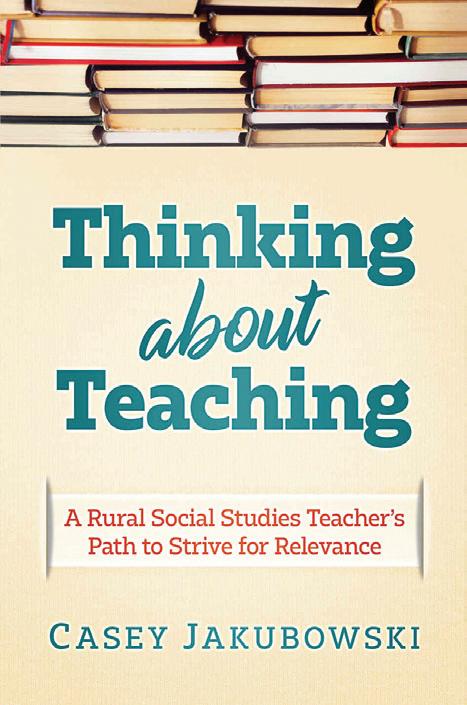
Thinking About Teaching: A Rural Social Studies Teacher’s Path to Strive for Excellence Casey Jakubowski, MA ’04 EduMatch, 2020
Teaching can push you to the limit emotionally, intellectually and physically. At the same time, it can be one of the most rewarding careers. In Thinking About Teaching, Jakubowski shares his thoughts on a wide range of educationrelated topics. In particular, he wants to give a voice to educators in rural areas. Reflecting on a wide variety of experience and research, Jakubowski offers all educators a reflective voice to channel their own experiences against and with on their journey. He is a consultant, educator and coach for people who want to move from OK to outstanding.

Seeds of Justice: Organizing Your Church to Transform the World Alex Tindal Wiesendanger ’05 Orbis Books, 2020
Wiesendanger draws on his extensive experience working with churches and faith-based communities to offer a book that translates a commitment to social justice into action. His hope is that churches can actually change policies and laws that violate the teachings of Christ. Wiesendanger wants his book to help readers move from being activists to agents of transformation both within the church and out in the world.
The author worked with the Jesuit Volunteer Corps, lived in a Catholic Worker community, served as director of organizing for the Community Renewal Society and was associate director of Tennessee Coalition to Abolish State Killing.
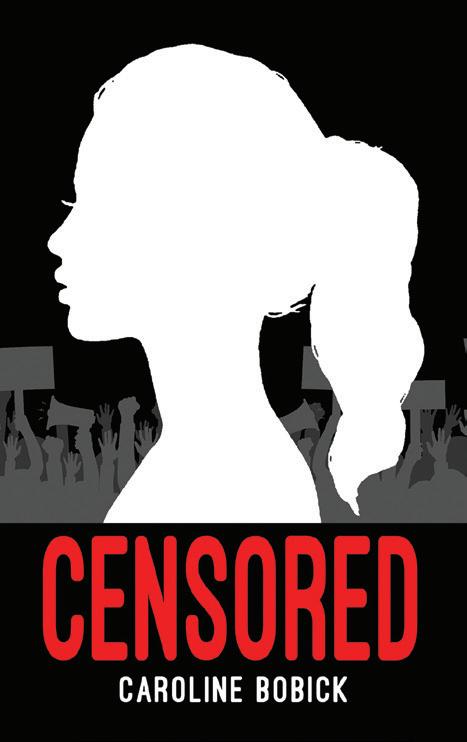
Censored Caroline Bobick ’09 Amazon.com Services LLC, 2020
What began as a citywide teacher protest escalated to a silencing of government dissenters. Censored follows a family’s journey as it tries to navigate a changing political landscape. Through the viewpoint of a 13-year-old girl, readers will see how suppressing freedom of speech and the media can have real effects on people.
Censored is Bobick’s debut novel. After earning a bachelor’s degree in philosophy, politics and law from Binghamton University, she pursued a master’s degree in international affairs from Columbia University, and she worked in Turkey, Honduras and Nicaragua. Bobick works in governmental relations for the New York State School Boards Association.
The University Union: The center of campus activity for 60 years
The University Union has been a hub of student activity since opening in early 1960. The Union expanded in 2001, adding what is known as University Union West. In 2014, an $8 million renovation provided more food choices and gathering places for students. Today, the Union is home to everything from classrooms, club-meeting spaces and recreational activities to the University Bookstore, the Fleishman Center for Career and Professional Development, the Student Association and the Center for Civic Engagement.
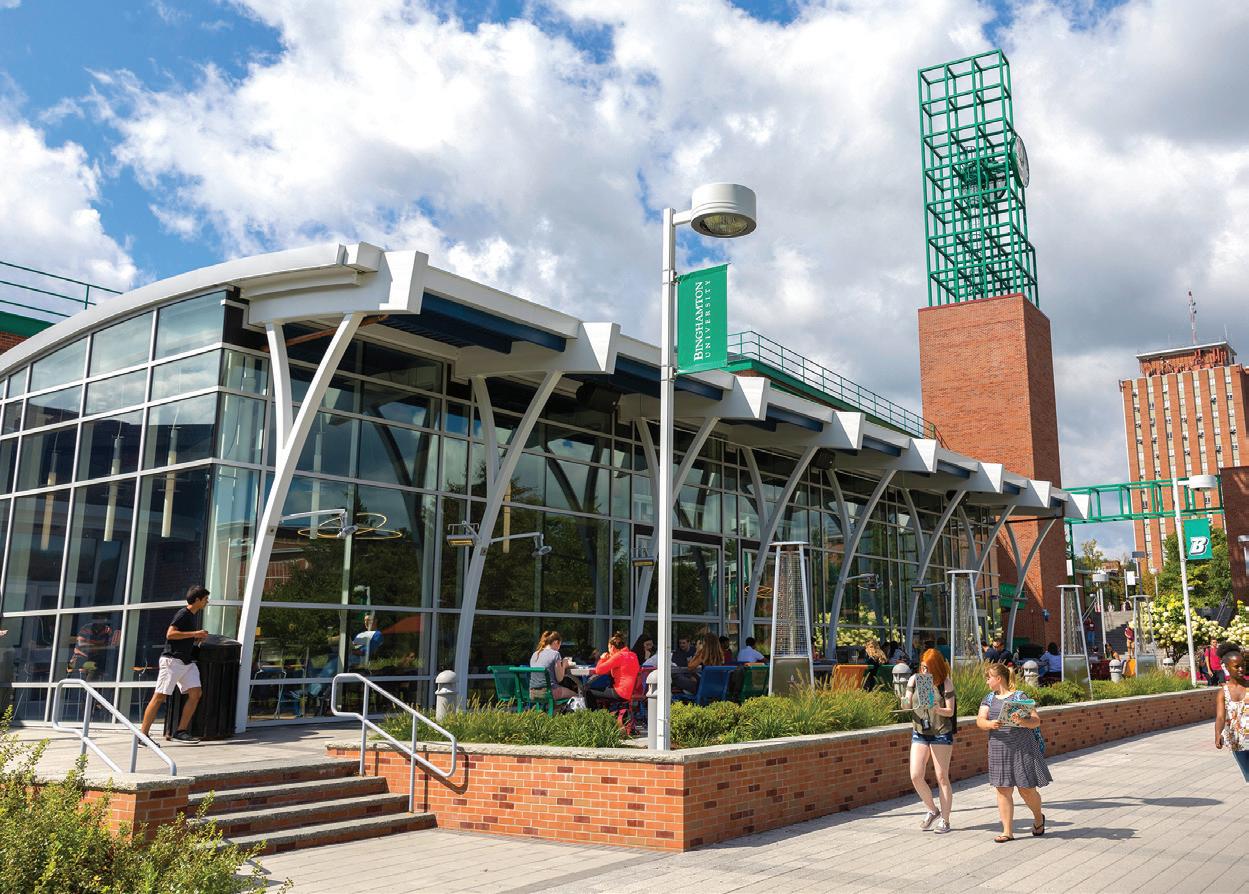
5
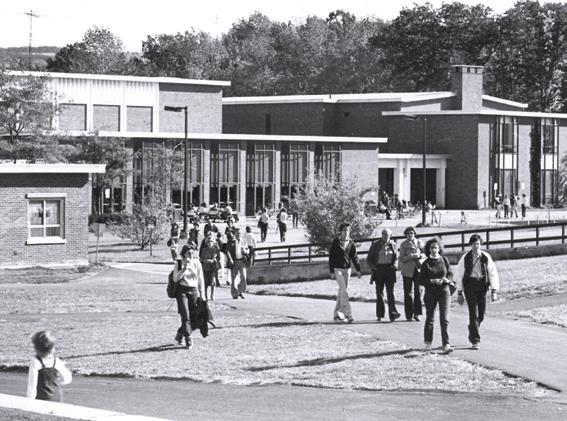
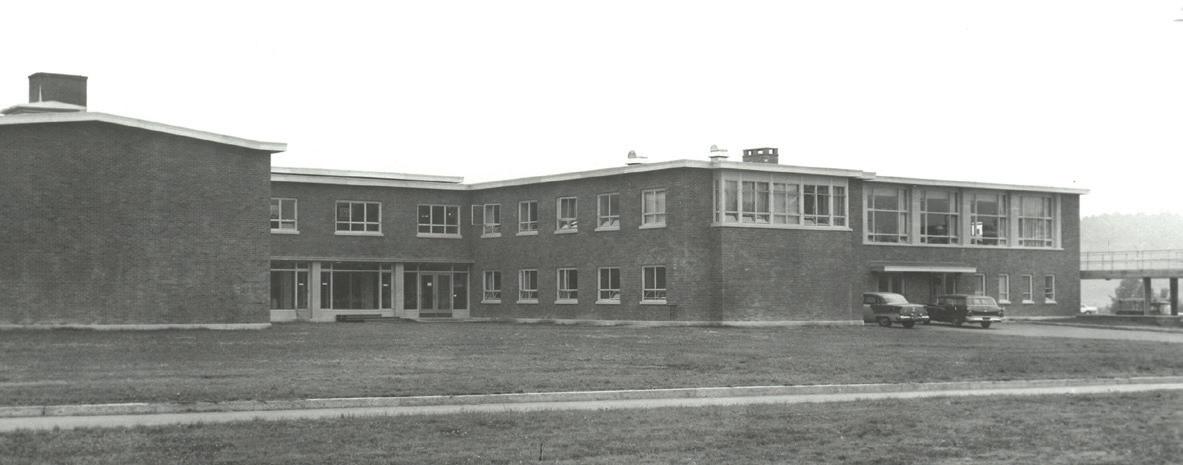
1


4
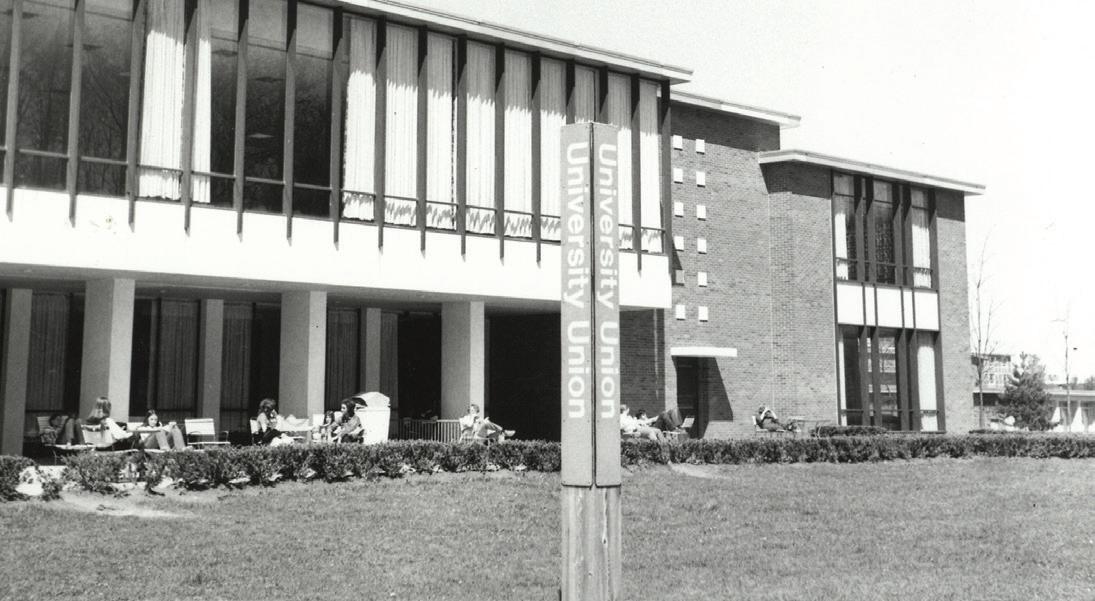

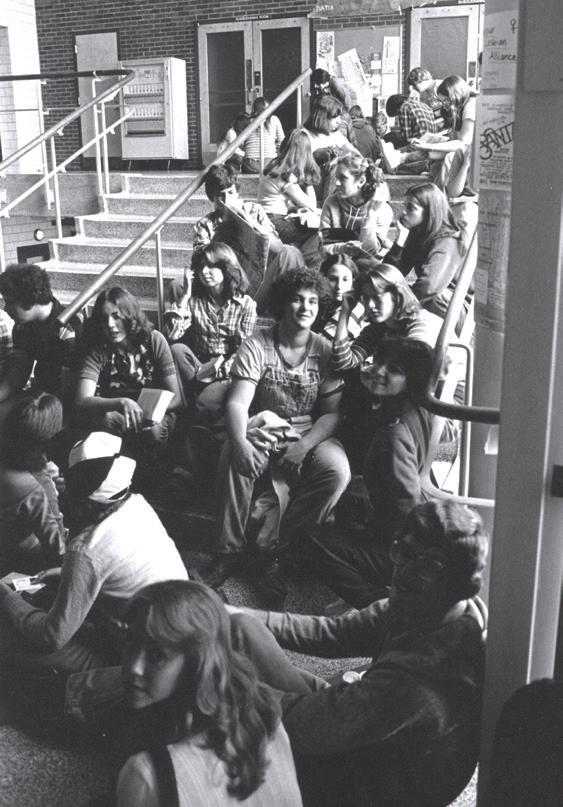
6

1 The University Union is seen shortly after its opening in spring 1960. 2 Known for many years as the “student center,” a University Union sign is posted outside the building in 1973. 3 Students sit on the steps inside the Union in 1978. 4 Students gather for orientation at the Union in 1979. 5 Members of the campus community walk to and from the University Union near the Engineering Building in 1980. 6 Large rooms in the Union such as the Mandela Room and Old Union Hall play host to events such as Law Day (seen here in 1993). 7 The exterior of the MarketPlace, which opened in 2014 and added additional food options and seating to the Union. 8 The Undergrounds, located in the basement of the Union, was renovated in early 2020. Stephanie Opara, Eniola Aderonmu, Nylah Godoy and Chantel Ramos play foosball after arriving on campus in August.
PO Box 6000 Binghamton, NY ı3902-6000
NON-PROFIT ORGANIZATION U.S. POSTAGE PAID BINGHAMTON UNIVERSITY
WE CAN STILL BE TOGETHER ... VIRTUALLY!

Yes, it would be great to hold alumni events in person. One day, we’ll be there again! In the meantime, come together with alumni through virtual events. Learn something new in a webinar or demo, get your blood pumping with a 5K or spin class, or join alumni hosts on “insider” tours of cool places. Autumn Loke ’10, MSW ’17, above, prepared a roasted salsa dish from a cooking demo by chef Mike Stites of Dos Rios Cantina restaurant in downtown Binghamton. The cooking demo was offered to Binghamton alumni as a virtual event.





